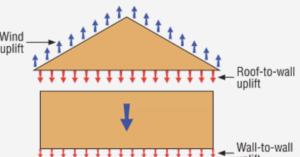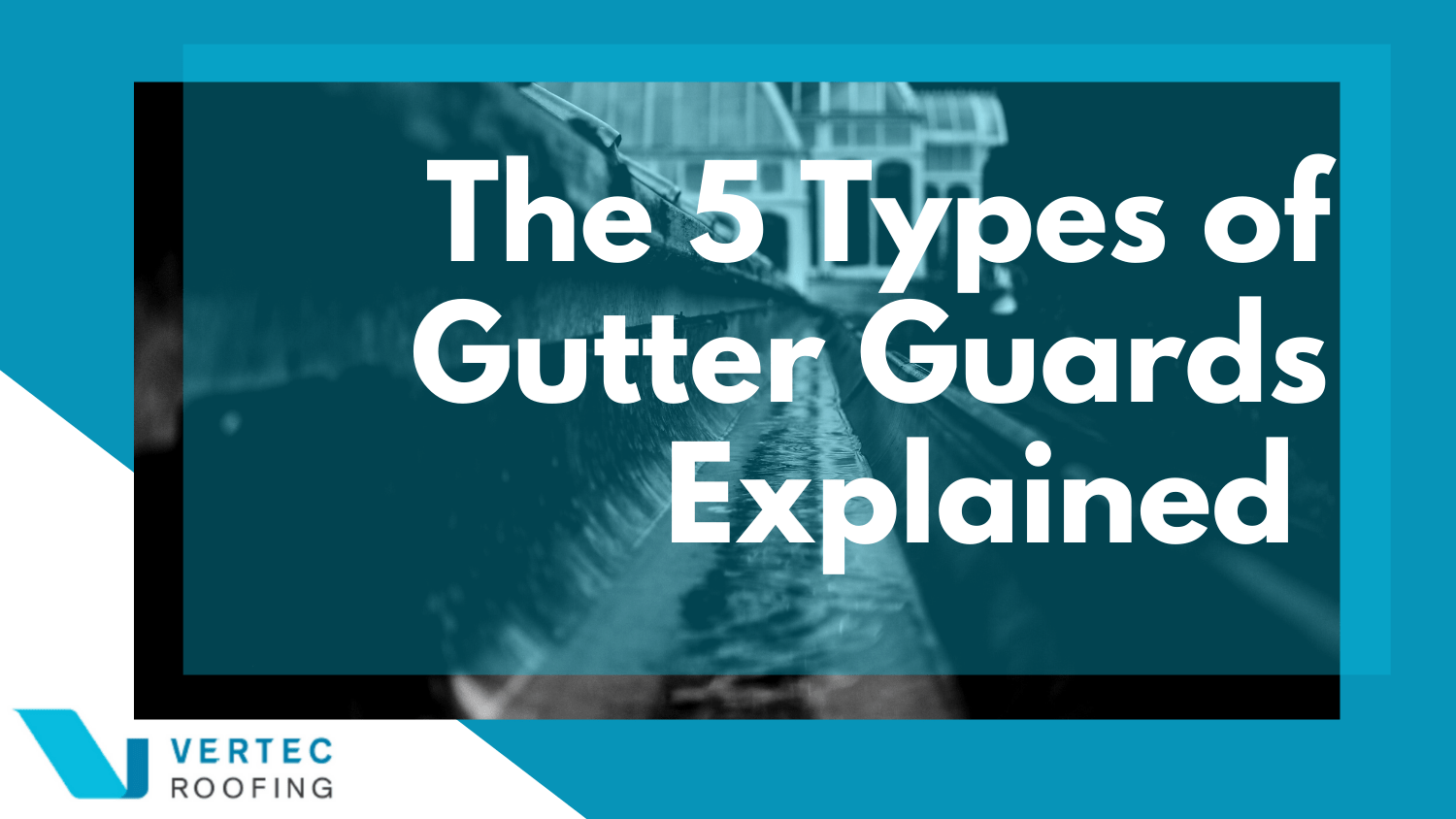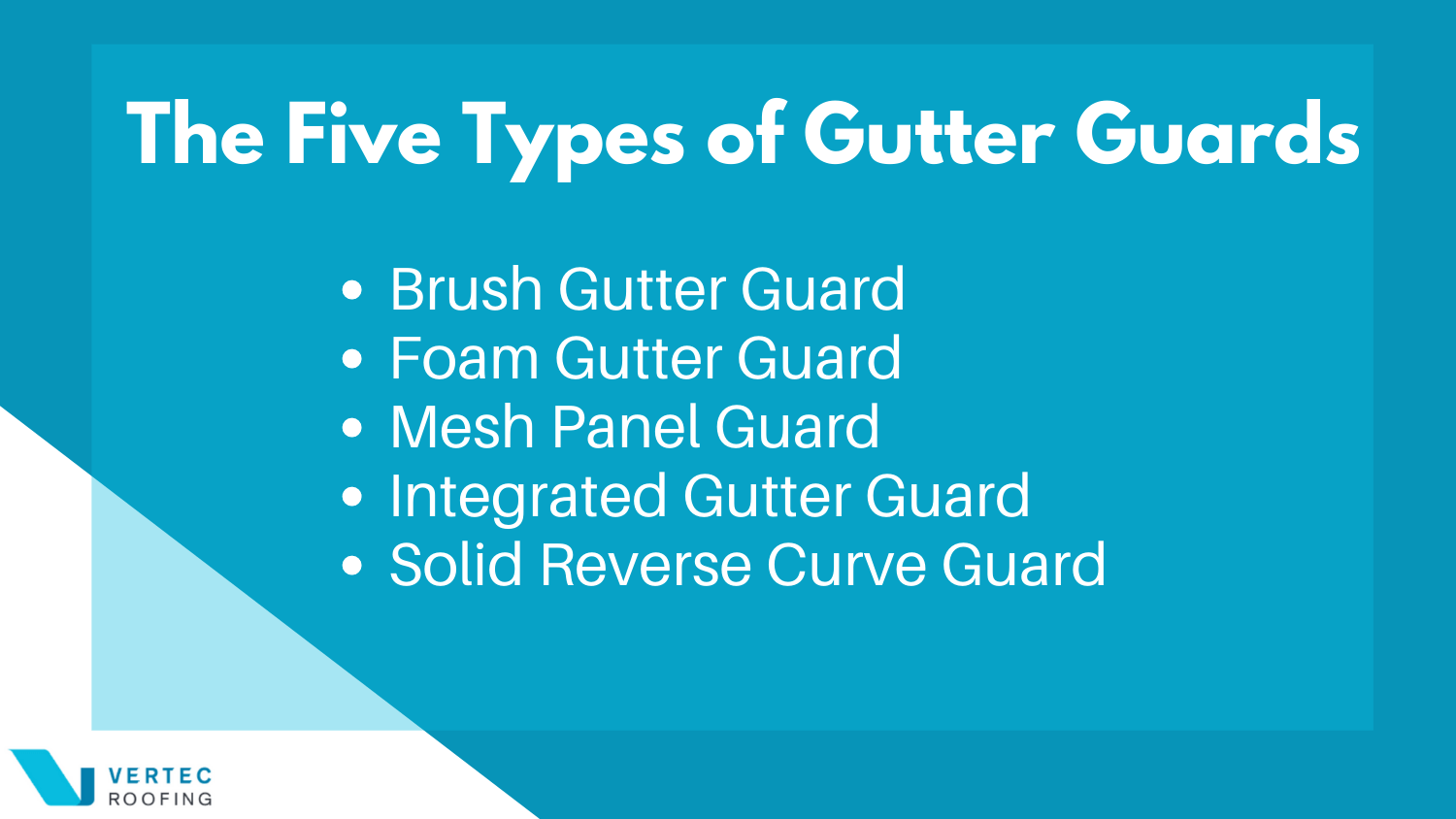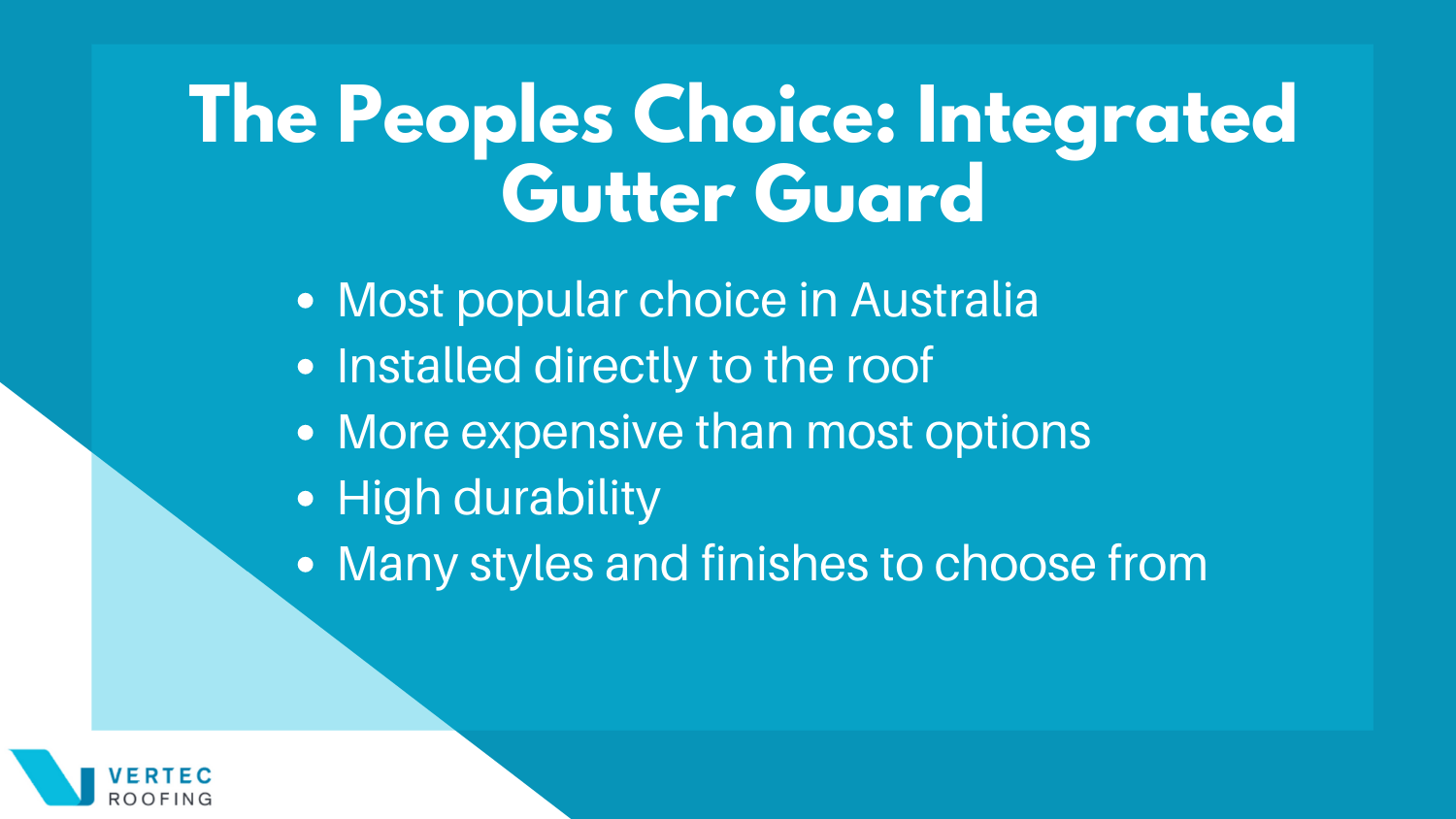

For many, guttering is something that gets ignored unless there is a serious problem. As roofers, we see our fair share of gutters falling apart and clogged with leaves. Here at Vertec Roofing, we replace our fair share of guttering and we genuinely believe that many homeowners will benefit from having the various types of gutter guards explained. So, our gutter replacement experts have provided a guide on the different gutters available.
Although there is no perfect solution, gutter guards can be a cost-effective solution to protecting your guttering and home. Regardless of the type of roof and budget you have, there are various types of gutter guard systems you can implement to reduce the build-up of debris and reduce your maintenance requirements.
Although the most obvious reason for gutters with built in guards would be to reduce the build-up of leaves and debris on a roof. There are a number of other reasons for installing gutters, such as:
For many, choosing the right type of gutter guard is dependent on the type of roof they have, their budget, time constrains, DIY ability and what they want to get out of their gutter guard. Let’s delve into the different types of guttering available.

Brush gutter guards are popular among many DIY solutions as they are relatively inexpensive and easy to install. Unlike most gutter guards which are fitted over the top of the guard, this solution involves installing brushes in the gutter reservoir itself. As the brush is installed in the gutter, it occupies the space where leaves would generally accumulate and encourages them to fall to the ground whilst still allowing water to freely flow in and through the guttering. The brushes can be cut to length and are easily held in place without extra fitting.
As they are cheaper and not fully fixed, brush gutter guards will require frequent replacement. A downside of these guards is that they can be easily clogged by small debris and leaves that stick to the bristles. The accumulation of debris and leaves also means that this is not a firesafe method protecting your gutters. In our types of gutter guards explained, this is the most basic solution.
Just like the brush gutter guards, foam gutter guards fit directly into the guttering. With the foam inserts, a smooth slope can be implemented, reducing the accumulation that is often seen in the brush inserts. However, it is common for these to be incorrectly installed by DIY enthusiast and a flat plane will result in build-up of leaves and debris. The foam material also easily accumulates mould and plant growth, requiring regular cleaning and replacement. This is also not suitable for fire protection as the foam itself can be flammable.
When looking at the types of gutter guards explained, mesh panelling is a popular form of a gutter guard that sits on top of the gutter. Mesh panels are easily installed directly to your roof and are relatively cheap. The slotted mesh panels allow water to easily flow through your guttering whilst keeping leaves out.
Whilst a very popular method, there are varying grades of mesh which are used. Cheaper materials break down easier and will require more frequent maintenance and replacement. Additionally, mesh with larger slots will allow smaller forms of debris to pass through into the gutter, whilst a small amount may wash through there is still a potential for them to build up. More expensive mesh with smaller holes will reduce this but will also be more expensive.
Whilst the mesh panelling can be a good option, it still often has the problem of accumulation as the flat mesh plane will build up with leaves and debris over time.
Integrated mesh guards are arguably the most popular choice for Australian homeowners. An integrated mesh gutter guard uses the same mesh as standard mesh guard but is installed directly to the roof, creating an angled slope over the top of the gutter. This means that leaves and debris pass over the top and do not get stuck.
This is more expensive than a standard mesh guard due to the more involved installation process; however, is highly effective and can even strengthen your guttering. As integrated gutter guards are a very popular option in Australia, there are a wide variety of options, styles, and services to choose from.

Solid reverse curve guards are solid guards that fit over the gutter and are sometimes referred to reverse curve guards. Solid reverse curve guards allow water to flow across the guard and into the gutter via a slot while the solid debris passes over the top to the edge of the gutter. Due to the solid material, reverse curve guards can be expensive and require installation by a certified professional. Although not a complete solution, these will keep leaves out of your gutter, but you will need to clean away the debris every so often.
There you have it: the 5 types of gutter guards explained. Regardless of your budget and preference, there are type of gutter guards that you can use to your advantage. If you would like further explanation of the types of gutter guard systems or how you can contact a roofing professional to install gutters with built in guards, contact the roof repair experts at Vertec Roofing on (02) 8007 4366 or submit an enquiry through our website.

At Vertec Roofing, we believe roofing is about protecting homes and enhancing comfort.